The Black Phantom Tetra, scientifically known as Hyphessobrycon megalopterus, is a fascinating little fish that’s captured the hearts of many aquarium enthusiasts. These charming creatures belong to the Characidae family, alongside their cousins like neon tetras and cardinal tetras. But what makes them truly special is their unique appearance and behavior.
Table of Contents
Imagine a small, silvery-gray fish with a distinctive black patch behind its gills, surrounded by a shimmering silver outline. That’s the Black Phantom Tetra for you! These fish got their name from this ghostly marking, which looks like a phantom floating in the water. The scientific name “Hyphessobrycon” means “slightly smaller than Brycon” (another fish genus), while “megalopterus” refers to their large fins.
In the wild, these fish call the upper Paraguay and Madeira river basins in Brazil and Bolivia home. They’re mid-dwellers, happily swimming in the middle layers of slow-moving waters filled with plants. Black Phantoms are peaceful by nature, but the males can put on quite a show! They’ll flare their fins and intensify their colors to impress females or defend their territory. It’s like watching a miniature underwater ballet!
These little guys aren’t picky eaters. In nature, they munch on small insects, worms, and crustaceans. In aquariums, they’ll gladly accept flakes, frozen foods, and even live treats like brine shrimp. A well-fed Black Phantom Tetra is a happy one!
One of the most intriguing aspects of Black Phantom Tetras is their breeding behavior. According to a study published in the Journal of Fish Biology, these fish exhibit complex courtship rituals. The males perform elaborate dances to attract females, showcasing their extended fins and intensified colors. It’s a spectacle that never fails to captivate observers.
Black Phantom Tetras have been popular in the aquarium trade since the 1950s. Their hardiness and peaceful nature make them excellent community fish. They’re often sold under names like “Phantom Tetra” or “Black Tetra” in pet stores.
Here’s a fun fact: despite their name, female Black Phantom Tetras actually have reddish fins! Only the males sport the all-black fins that give the species its common name. It’s nature’s way of adding a splash of color to these already charming fish.
In the end, whether you’re a seasoned aquarist or a beginner, the Black Phantom Tetra offers a perfect blend of beauty, interesting behavior, and ease of care. They’re living proof that sometimes, the most fascinating things come in small packages!
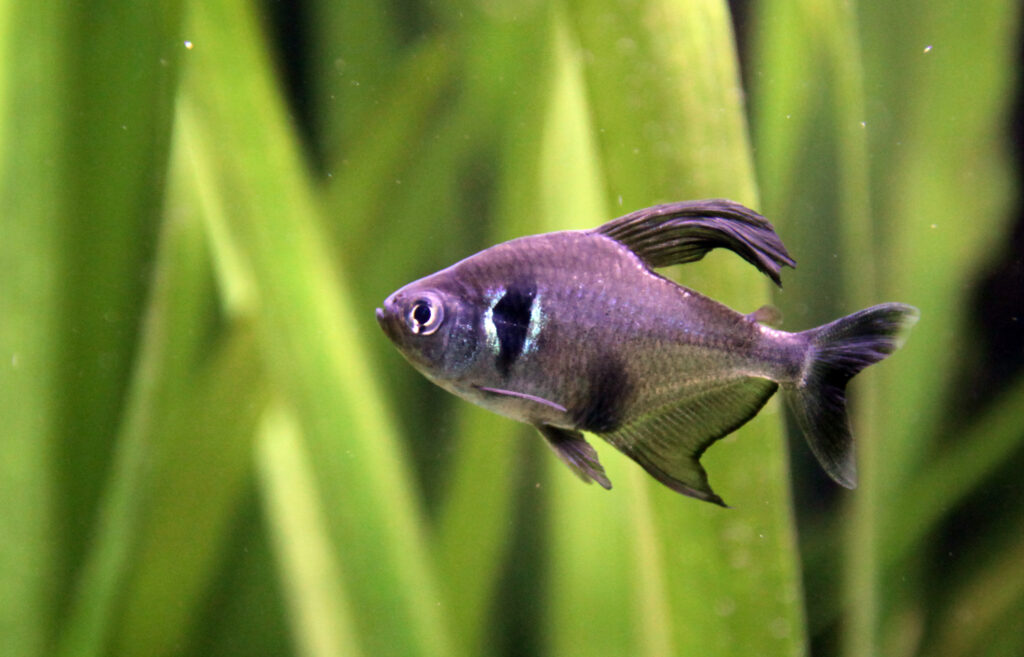
Black Phantom Tetra Key Information
The Black Phantom Tetra is a captivating aquarium fish that’s sure to catch your eye. These little swimmers boast a silvery-gray body with a distinctive black patch behind their gills, outlined by a shimmering silver halo. Males sport striking black fins, while females add a splash of color with their reddish fins. When excited or during courtship, males intensify their colors, creating a mesmerizing display that’s hard to miss in any aquarium.
Here’s a handy table with key information about the Black Phantom Tetra:
| Family | Characidae |
| Origin | Upper Paraguay and Madeira river basins in Brazil and Bolivia |
| Price | Varies, typically $3-$5 per fish |
| Common Names | Phantom Tetra, Black Tetra |
| Variants | No known color variants |
| Ideal Tank Size | 20 gallons or larger |
| Water Parameters | Temperature: 72-82°F (22-28°C), pH: 6.0-7.5, Hardness: 5-12 dGH |
| Lifespan | 3-5 years on average |
| Full Size | Up to 1.75 inches (4.5 cm) |
| Natural Environment | Slow-moving, plant-rich waters |
| Behavior | Peaceful, schooling fish |
| Habitat Preference | Mid-water column |
| Aquarium Decoration | Plants, driftwood, and open swimming areas |
| Ideal Tank Mates | Other peaceful community fish of similar size |
| Fish to Avoid | Large, aggressive species |
| Best Foods/Diet | Varied diet of quality flakes, frozen, and live foods |
| Disease | Susceptible to common freshwater fish diseases |
| Sex-switch | No known sex-switching behavior |
| Gender Differences | Males have larger, blacker fins; females have reddish fins |
| Care Level | Easy to moderate |
| Breeding Level | Moderate |
Ideal Tank Mates for Black Phantom Tetra
The Black Phantom Tetra is a peaceful and social fish that thrives in community tanks. When selecting tank mates, it’s essential to choose species that share similar water parameters and temperaments. Here are 10 ideal tank mates for the Black Phantom Tetra, each offering unique compatibility benefits:
Before we dive into the list, it’s important to note that these species are generally compatible with Black Phantom Tetras due to their peaceful nature, similar size, and shared water parameter preferences. However, individual fish personalities can vary, so always monitor new additions to your aquarium.
Neon Tetra (Paracheirodon innesi)
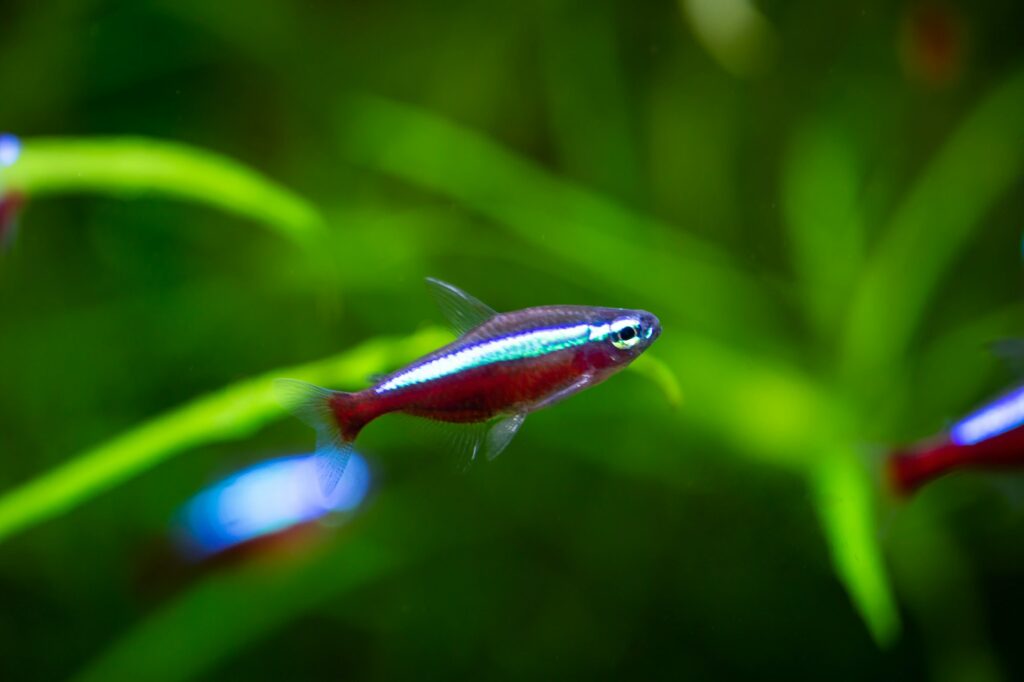
Neon Tetras are an excellent choice as tank mates for Black Phantom Tetras. Their small size and peaceful nature make them ideal companions. Both species originate from similar South American habitats, which means they share water parameter preferences. The vibrant blue and red coloration of Neon Tetras provides a beautiful contrast to the more subdued tones of Black Phantom Tetras, creating an visually appealing aquarium.
| Common/Market Names | Price Range | Care Level | Behavior | Life Span | Max Size |
|---|---|---|---|---|---|
| Neon Tetra | $2-$4 | Easy | Peaceful | 5-8 years | 1.5 inches |
Corydoras Catfish (Corydoras spp.)
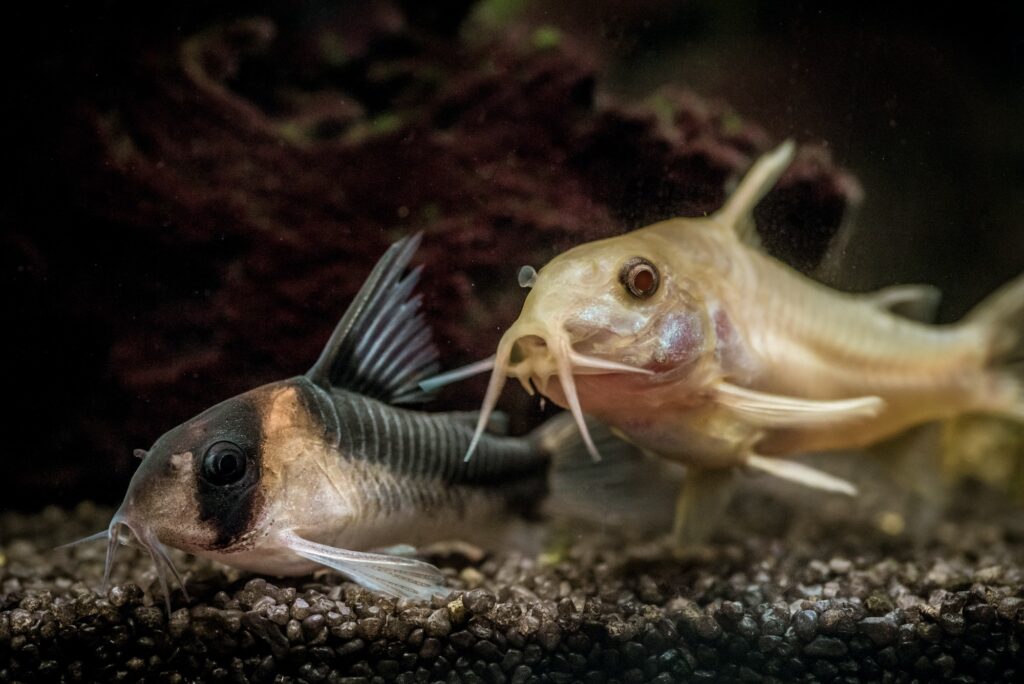
Corydoras catfish are peaceful bottom-dwellers that make excellent tank mates for Black Phantom Tetras. They occupy different areas of the aquarium, with Corydoras primarily staying near the substrate while Black Phantoms prefer the middle water column. This spatial separation reduces competition for resources and allows both species to exhibit their natural behaviors comfortably.
| Common/Market Names | Price Range | Care Level | Behavior | Life Span | Max Size |
|---|---|---|---|---|---|
| Cory Catfish, Corys | $3-$10 | Easy | Peaceful | 3-5 years | 2-3 inches |
Harlequin Rasbora (Trigonostigma heteromorpha)
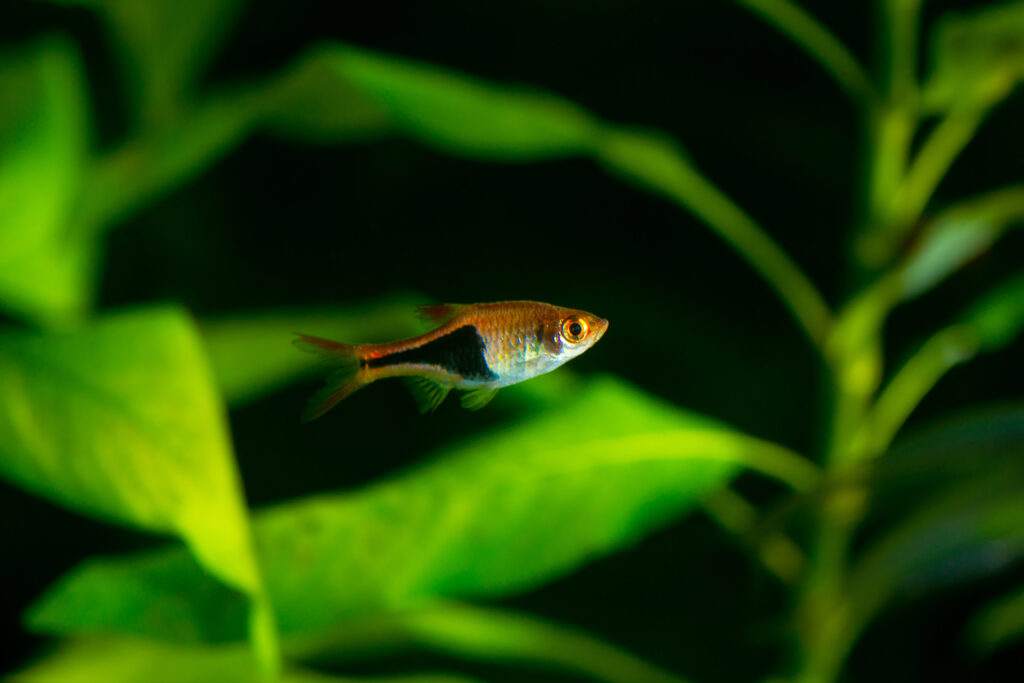
Harlequin Rasboras are compatible with Black Phantom Tetras due to their similar size and peaceful temperament. These fish add a splash of orange color to the aquarium, complementing the more subtle hues of the Black Phantoms. Their active swimming behavior encourages Black Phantom Tetras to be more outgoing, promoting a lively and engaging aquarium environment.
| Common/Market Names | Price Range | Care Level | Behavior | Life Span | Max Size |
|---|---|---|---|---|---|
| Harlequin Rasbora | $2-$5 | Easy | Peaceful | 5-8 years | 2 inches |
Dwarf Gourami (Trichogaster lalius)
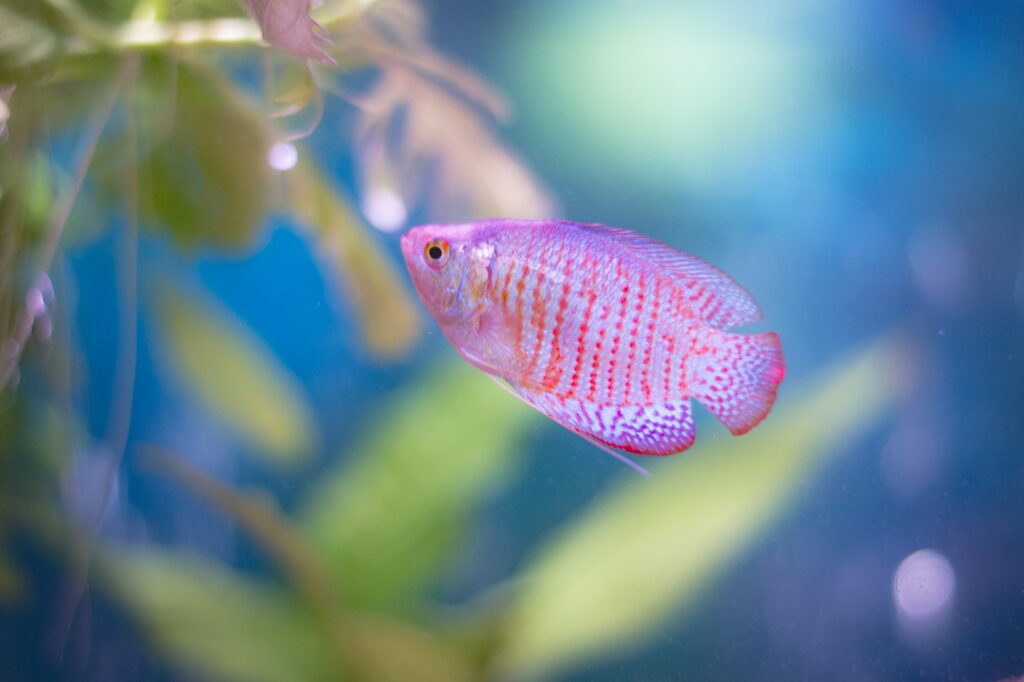
Dwarf Gouramis can be excellent tank mates for Black Phantom Tetras, adding a touch of elegance to the aquarium. Their calm demeanor and similar size make them compatible. The Dwarf Gourami’s labyrinth organ allows them to breathe air from the surface, which means they often occupy the upper parts of the tank, leaving plenty of space for Black Phantoms in the middle areas.
| Common/Market Names | Price Range | Care Level | Behavior | Life Span | Max Size |
|---|---|---|---|---|---|
| Dwarf Gourami | $5-$15 | Easy | Peaceful | 4-6 years | 3.5 inches |
Celestial Pearl Danio (Danio margaritatus)
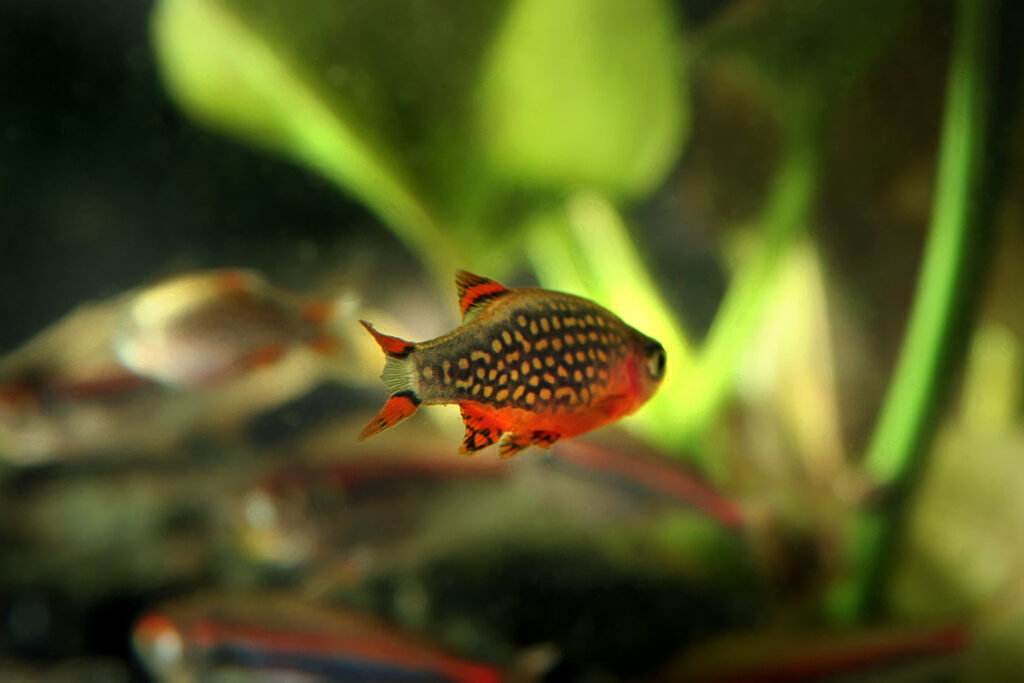
Celestial Pearl Danios, also known as Galaxy Rasboras, are compatible with Black Phantom Tetras due to their small size and peaceful nature. These fish add a unique pattern and coloration to the aquarium, creating an interesting visual contrast. Their active swimming behavior can encourage Black Phantom Tetras to be more outgoing and display natural schooling behaviors.
| Common/Market Names | Price Range | Care Level | Behavior | Life Span | Max Size |
|---|---|---|---|---|---|
| Galaxy Rasbora | $3-$8 | Moderate | Peaceful | 3-5 years | 1 inch |
Otocinclus Catfish (Otocinclus spp.)
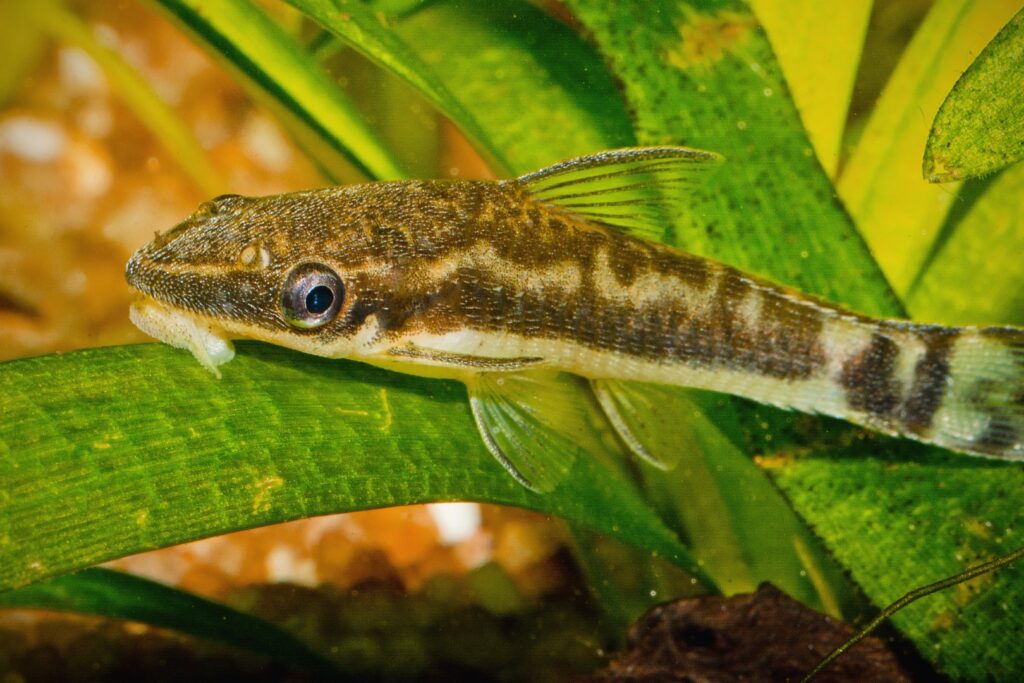
Otocinclus catfish are peaceful algae eaters that make great tank mates for Black Phantom Tetras. They occupy different areas of the tank and have different dietary needs, reducing competition. Otocinclus help keep the aquarium clean by consuming algae, which can benefit the overall health of the tank ecosystem, including the Black Phantom Tetras.
| Common/Market Names | Price Range | Care Level | Behavior | Life Span | Max Size |
|---|---|---|---|---|---|
| Oto Catfish, Otos | $2-$5 | Moderate | Peaceful | 3-5 years | 2 inches |
Ember Tetra (Hyphessobrycon amandae)
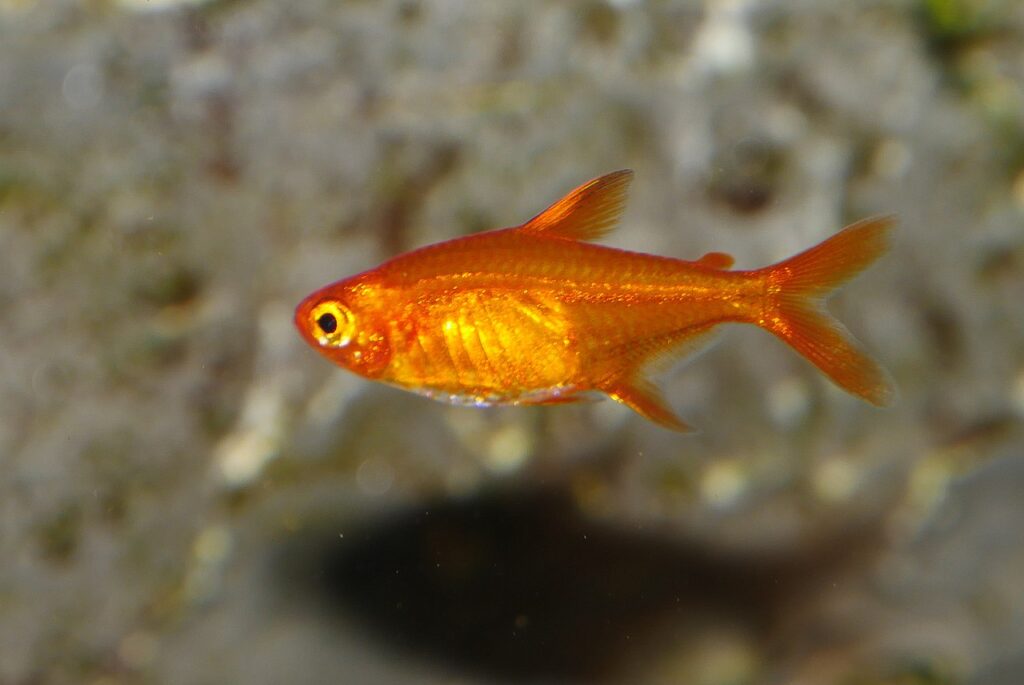
Ember Tetras are excellent companions for Black Phantom Tetras due to their similar size and peaceful nature. Their bright orange-red coloration provides a striking contrast to the more subdued tones of Black Phantoms. Both species enjoy similar water conditions and can often be seen schooling together, creating a dynamic and visually appealing display in the aquarium.
| Common/Market Names | Price Range | Care Level | Behavior | Life Span | Max Size |
|---|---|---|---|---|---|
| Ember Tetra | $3-$6 | Easy | Peaceful | 2-4 years | 0.8 inches |
Kuhli Loach (Pangio kuhlii)
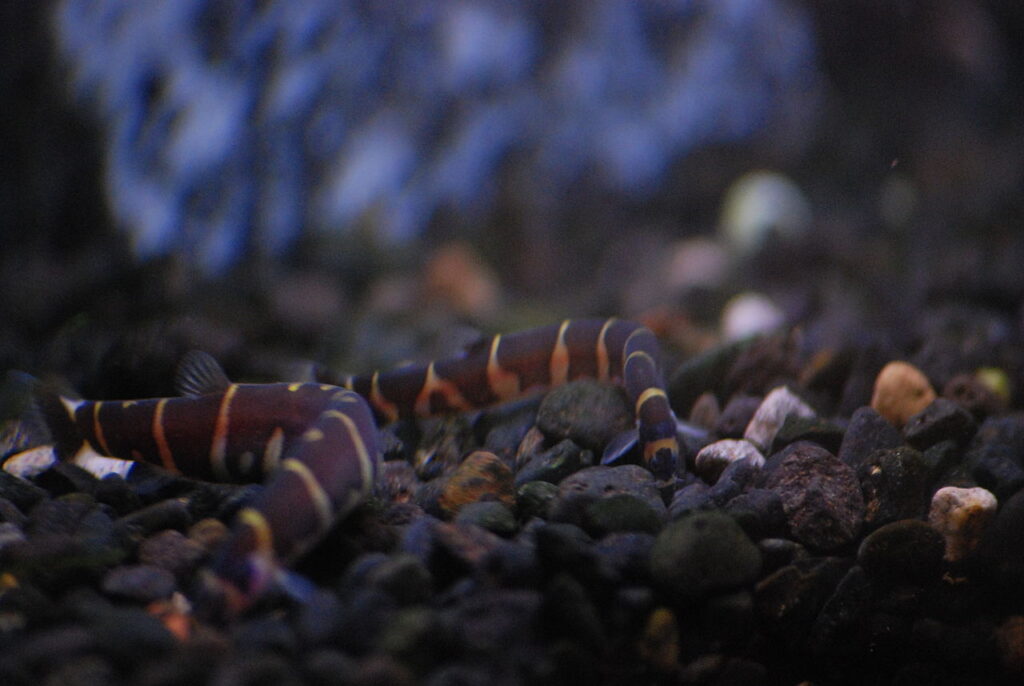
Kuhli Loaches are interesting bottom-dwellers that can coexist peacefully with Black Phantom Tetras. Their eel-like appearance adds diversity to the tank’s inhabitants. Kuhli Loaches are nocturnal and spend much of their time hiding, which means they won’t compete with Black Phantoms for space or food during the day.
| Common/Market Names | Price Range | Care Level | Behavior | Life Span | Max Size |
|---|---|---|---|---|---|
| Coolie Loach | $3-$8 | Easy | Peaceful | 10+ years | 4 inches |
Bolivian Ram (Mikrogeophagus altispinosus)
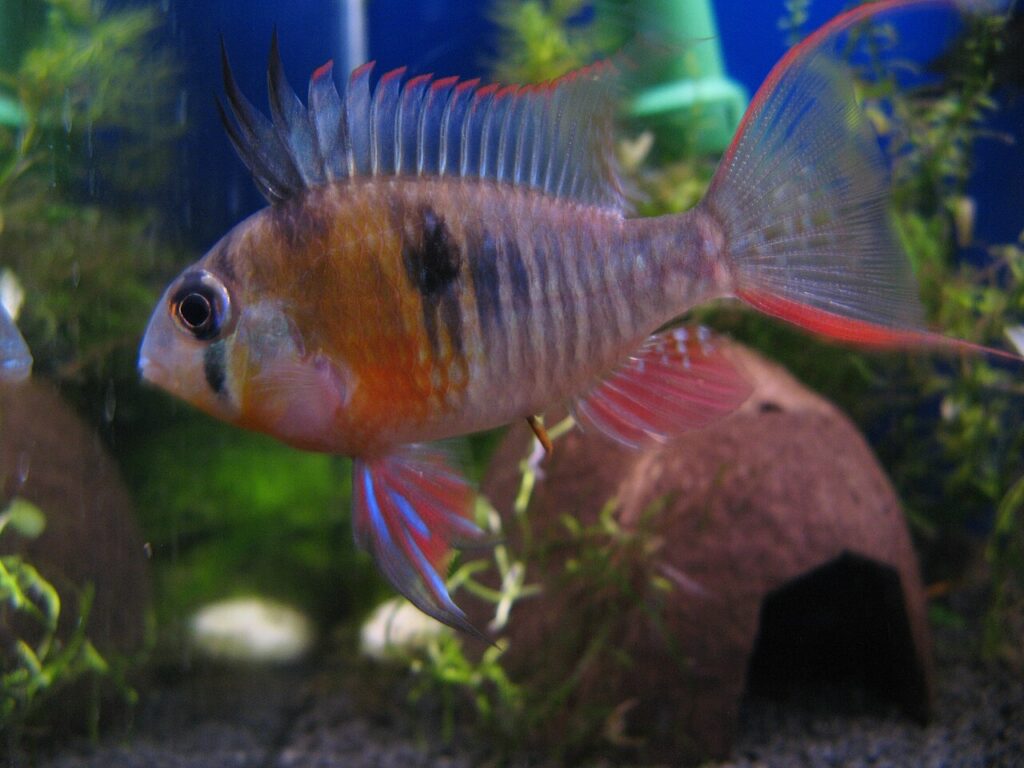
Bolivian Rams are mild-mannered dwarf cichlids that can coexist peacefully with Black Phantom Tetras. They add a different body shape and behavior to the aquarium, increasing visual interest. Bolivian Rams tend to stay in the lower parts of the tank, leaving plenty of swimming space for the Black Phantoms in the middle areas.
| Common/Market Names | Price Range | Care Level | Behavior | Life Span | Max Size |
|---|---|---|---|---|---|
| Bolivian Butterfly | $8-$15 | Moderate | Peaceful | 3-5 years | 3 inches |
Bristlenose Pleco (Ancistrus spp.)
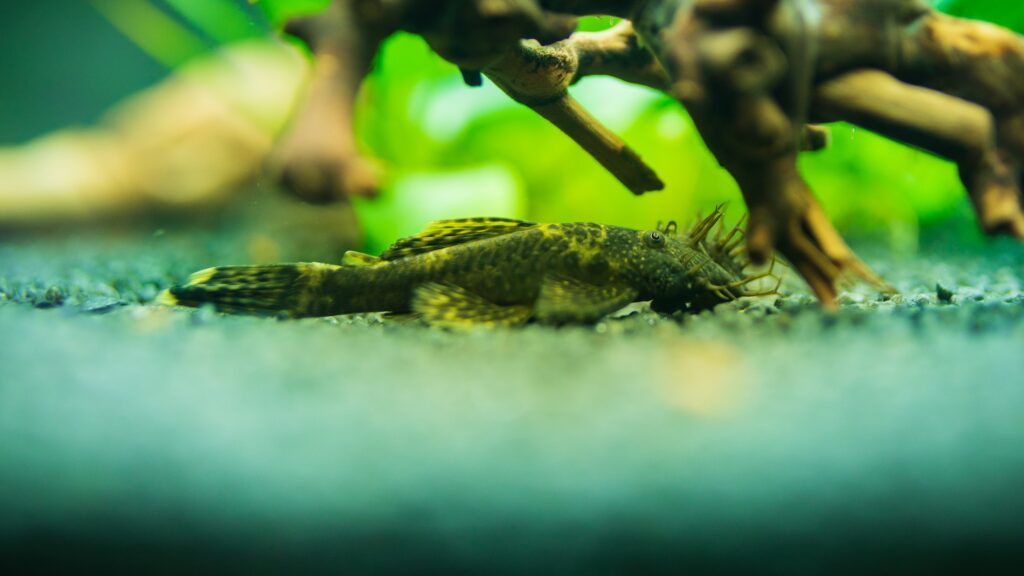
Bristlenose Plecos are peaceful bottom-dwelling catfish that make excellent tank mates for Black Phantom Tetras. They help keep the aquarium clean by consuming algae and leftover food. Their unique appearance adds diversity to the tank inhabitants, and their calm nature ensures they won’t bother the Black Phantoms.
| Common/Market Names | Price Range | Care Level | Behavior | Life Span | Max Size |
|---|---|---|---|---|---|
| Bushy Nose Pleco | $5-$15 | Easy | Peaceful | 5-10 years | 5 inches |
FAQs about Black Phantom Tetra
Can Black Phantom Tetras live with larger fish?
It’s best to avoid keeping them with much larger fish as they may become stressed or be seen as prey.
How many Black Phantom Tetras should be kept together?
They thrive in groups of at least 6-8 individuals.
Do Black Phantom Tetras need specific water conditions?
They prefer slightly acidic to neutral water with a pH between 6.0-7.5 and soft to medium hardness.
Can Black Phantom Tetras be kept with fin-nipping species?
It’s best to avoid fin-nipping species as Black Phantom Tetras have flowing fins that could be targets.
Are there any fish that should definitely not be kept with Black Phantom Tetras?
Aggressive or very large fish should be avoided, such as cichlids (except for dwarf species), large barbs, or predatory fish.
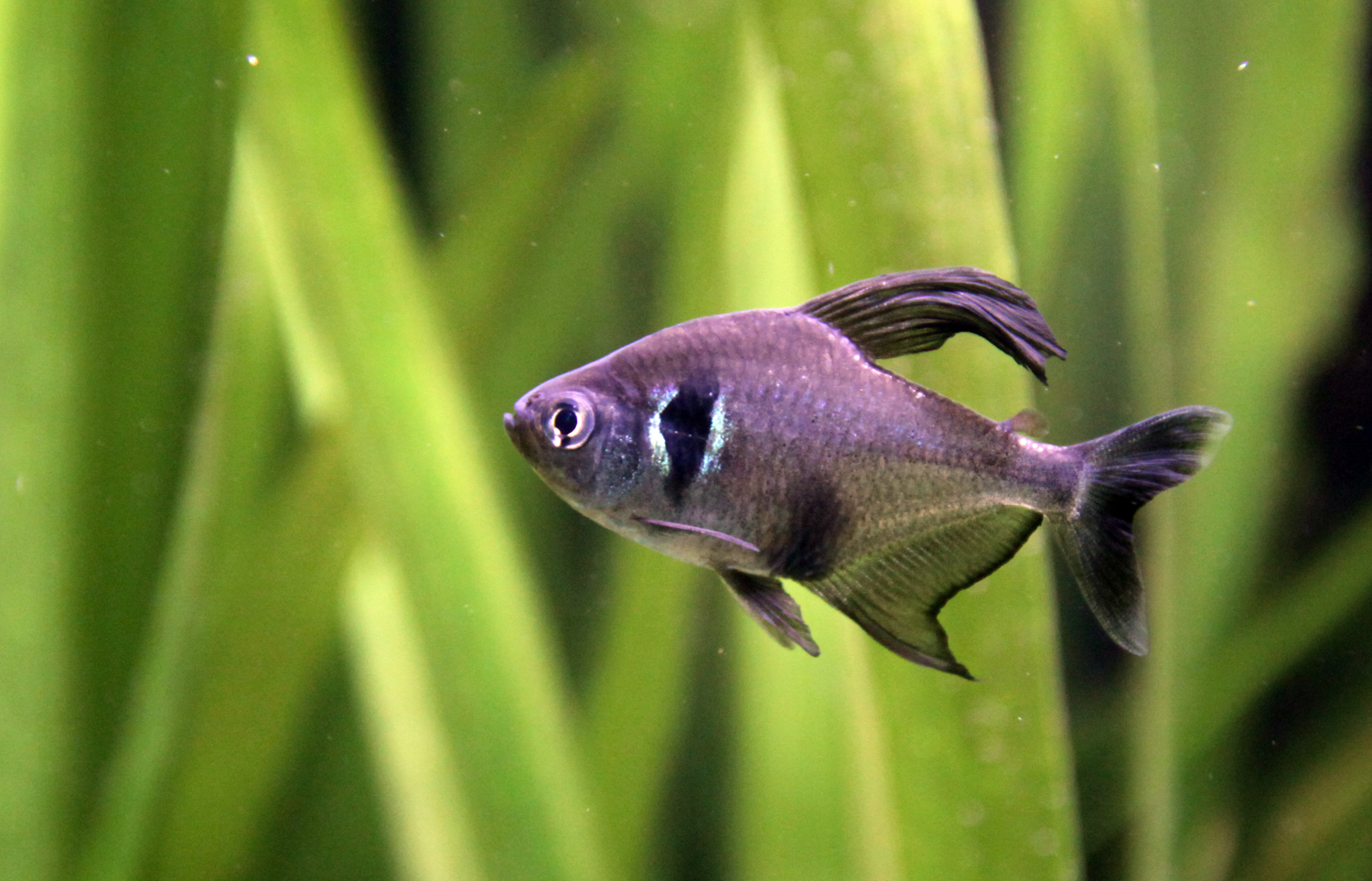
Leave a Reply